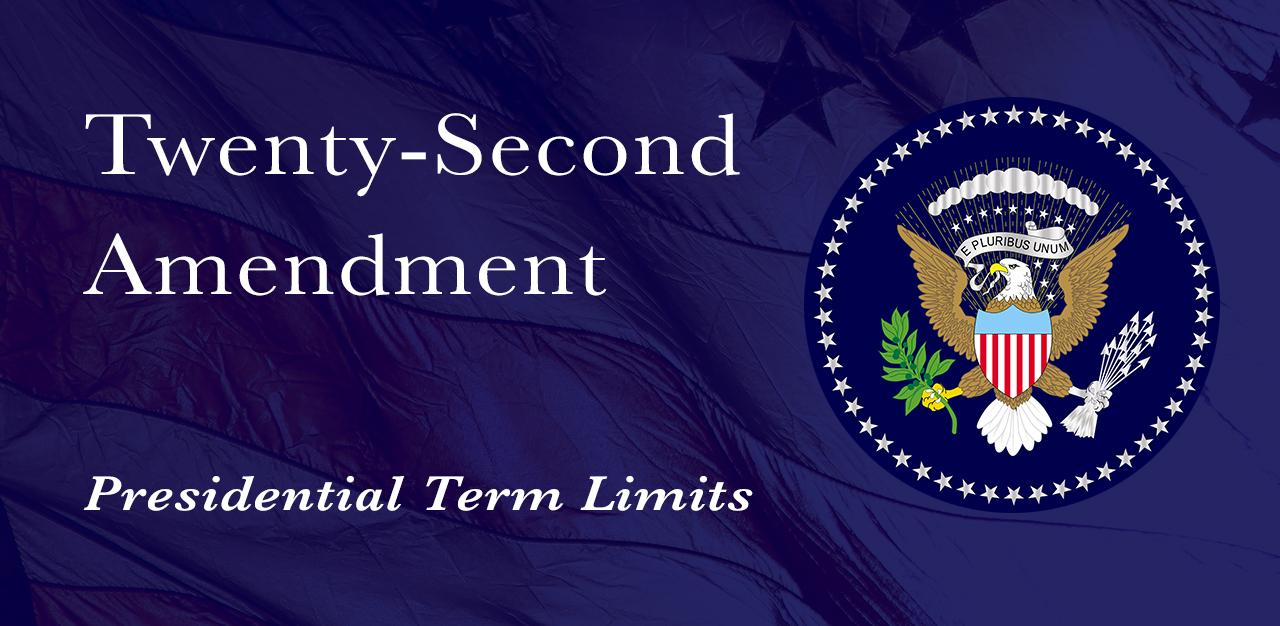
The Twenty-Second Amendment was proposed by Congress on March 21, 1947, and ratified on February 27, 1951. Comprised of two sections, it sets a two-term (four years each) limit for an elected President, and those restrictions apply to an individual who becomes president, but not through the election process, and serves for more than two years.
The full text of the Twenty-Second Amendment states,
Section 1.
No person shall be elected to the office of the President more than twice, and no person who has held the office of President, or acted as President, for more than two years of a term to which some other person was elected President shall be elected to the office of the President more than once. But this article shall not apply to any person holding the office of President when this article was proposed by the Congress, and shall not prevent any person who may be holding the office of President, or acting as President, during the term within which this article becomes operative from holding the office of President or acting as President during the remainder of such term.
Section 2.
This article shall be inoperative unless it shall have been ratified as an amendment to the Constitution by the legislatures of three-fourths of the several states within seven years from the date of its submission to the states by the Congress.
The number of terms a President can serve was not established in the Constitution. Although discussed over time, it became an issue with the Franklin D. Roosevelt presidency. President Roosevelt was first elected to office in November 1933, and later for a second and third term, ending his presidency upon his death on April 12, 1945, in his fourth term that year. Prior presidents had run for third terms in office, but were unsuccessful.
Two years following his death, a 1947 House of Representatives Report noted that a two-term limit had developed naturally over time in America and therefore was rooted in reason, tradition, and history, explaining “a well-defined custom which has risen in the past that no President should have more than two terms in that office.”
Although this amendment seems “cut and dry,” a careful reading of the text demonstrates loopholes. Yes, it stresses limitations on Presidents elected to office. However, it remains possible that a former President who was twice elected, and having served both terms, can subsequently serve as Vice-President, and then become President again by succession.
After Roosevelt’s unprecedented four terms in office, the rather vague language contained in the Twenty-Second Amendment, as well as its interplay with the Twelfth Amendment has yet to be tested in court – no case pertaining to these issues has ever been brought before the Supreme Court of the United States.







